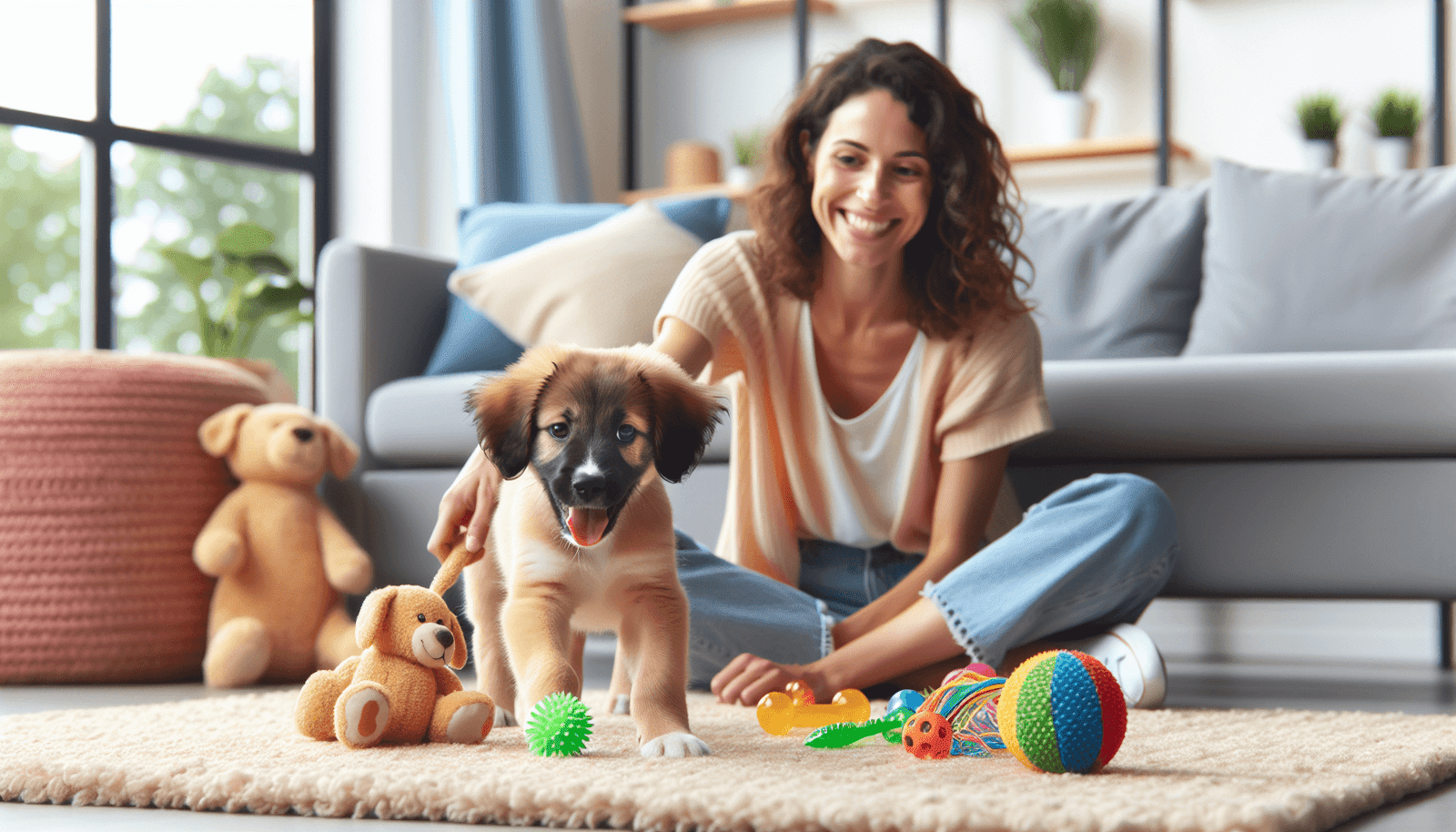Welcoming a new puppy into your home brings joy and sometimes a bit of chaos. Looking for a simple way to deepen your connection?
To turn that chaos into closeness you feel every day, try these puppy bonding activities. For more general ideas check out our puppy bonding tips.
Create positive training sessions
Training sessions help you build trust when you keep them fun and short. Looking for an easy win?
- Reward good behavior right away, with a treat or verbal praise.
- Keep each session under five minutes to match your puppy’s attention span.
- End on a success so your pup remembers the fun.
- Try a marker word like “yes” to signal exactly when they did right.
Consistent, positive feedback teaches your puppy that you’re a safe, reliable leader.
Try scent-based games
Puppies explore the world through their noses, which makes scent work a perfect bonding activity. It taps into instincts, and it’s a calm way to connect.
- Hide small treats around a room and encourage your puppy to sniff them out.
- Introduce new scents, such as a favorite towel, so your pup links your belongings with comfort.
- Try a simple shell game using cups to hide a toy under one of them.
For more ideas on engaging sniff challenges, check our puppy bonding games.
Practice basic obedience cues
Teaching simple commands builds your puppy’s confidence and trust in you. You also lay the groundwork for good manners.
- Sit: Hold a treat above your puppy’s nose, say “sit,” then reward when their bottom touches the floor.
- Stay: Ask for sit first, then take a step back slowly, praising every few seconds they hold still.
- Recall: Use a cheerful tone, back away a few feet, call your puppy, and reward enthusiastically.
Pair these drills with our puppy bonding exercises for maximum impact.
Engage in interactive play
Play builds joy and trust, and most puppies can’t resist a good game. Ready to throw a ball?
- Fetch: Toss a small ball or soft toy a few feet away, then praise your puppy when they bring it back.
- Tug: Use a sturdy rope toy, letting your pup win occasionally to boost confidence.
- Hide and seek: Hide behind furniture or in another room, then call your puppy’s name so they learn to track you.
Rotate toys to keep playtime fresh, and always let your pup win sometimes.
Explore socialization outings
Taking your puppy out safely helps them trust you in new situations. Social skills are part of bonding too.
- Puppy classes: Join a beginner-friendly group so your dog meets people and other pups under supervision.
- Park strolls: Visit quiet parks at off-peak hours to introduce new sights and sounds gradually.
- Puppy playdates: Invite a friend with a vaccinated, friendly dog for a supervised meet-up.
Remember to follow vaccination guidelines and use a secure leash or harness.
Include grooming and massage
Grooming moments can feel like a spa day for your puppy. They learn that being touched is safe and soothing.
- Brushing: Use a soft brush and stroke in the direction of the fur, praising calm behavior.
- Nail handling: Gently touch each paw daily, rewarding your puppy so they associate paw care with good things.
- Massage: Use gentle circular motions on the shoulders and chest, paying attention to areas your pup enjoys most.
Short, frequent sessions build a habit that benefits grooming time in the long run.
Use mealtime learning
Mealtime is a chance to teach manners and build trust. Feeding puzzles turn dinner into a fun challenge.
- Slow feeders: Offer kibble in a puzzle bowl or treat-dispensing toy to stretch mealtime.
- Hand feeding: Occasionally feed pieces by hand so your pup learns to take food gently.
- Name association: Say your puppy’s name before lowering the dish so they link their name with something good.
These small adjustments make your puppy see you as both provider and playmate.
Build daily routines
Consistency helps your puppy feel secure, and security is a key to bonding. A predictable schedule keeps both of you on the same page.
- Regular walks: Set consistent times for potty breaks and exercise so your puppy learns to trust the routine.
- Feeding schedule: Offer meals at the same times each day to reduce anxiety.
- Quiet time: Build in relaxation periods for cuddles or crate rest after play or walks.
For broader tips on how to bond with your new puppy, check our how to bond with your new puppy.
Bonding with a puppy takes time and a mix of activities that suit your pup’s style. Try these ideas one at a time, and notice which ones your puppy loves the most.
Which activity will you try first? Let us know in the comments below so everyone can learn from your experience.

